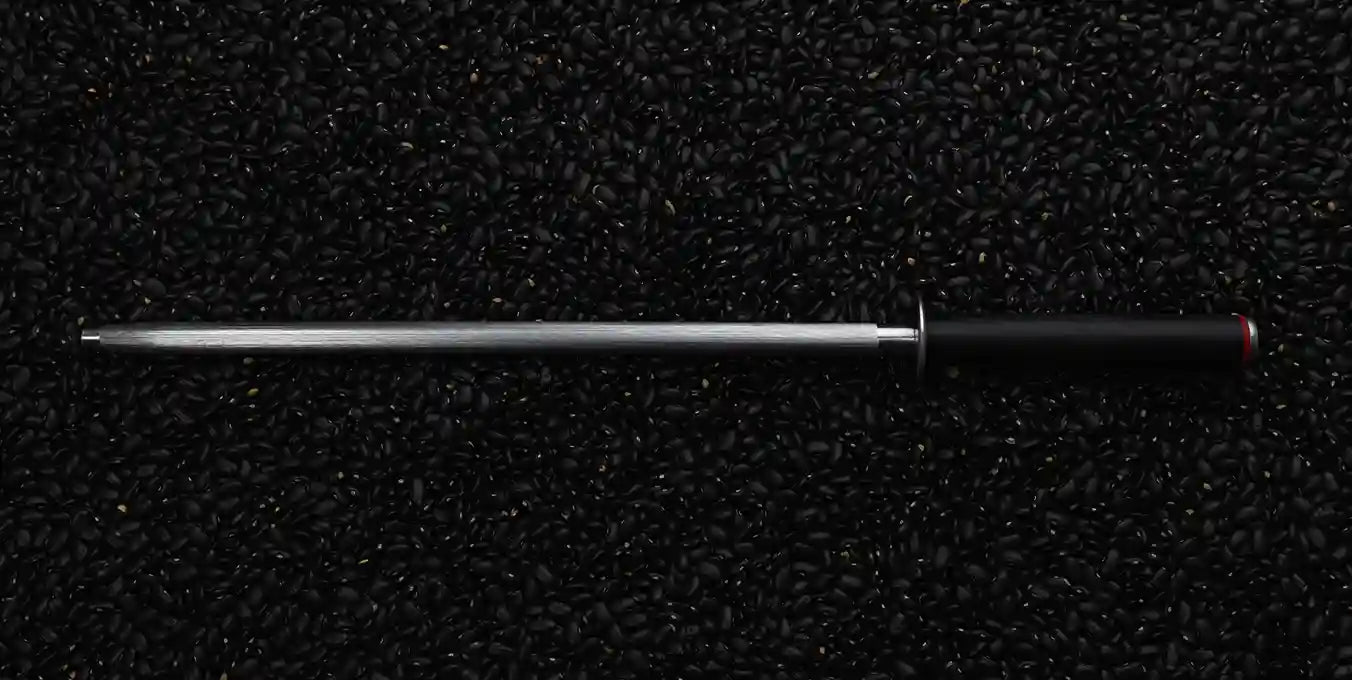Honing or Sharpening : Which One Does Your Knife Need and Why?
To maintain the blade of your knife, you need to sharpen and/or hone it. The trick is knowing how often to do it, what material(s) and technique to use. So, we are going to share our know-how with you on everything (or almost) you need to know to become an expert in this art!
First, sharpening and honing are two processes that are often confused but are very distinct, used to maintain and care for a knife's edge;
Honing involves straightening the edge of a knife blade using a honing steel, without removing any metal. Over time, the edge of a knife can become distorted or even twisted, which can make it less effective. The purpose of honing is to maintain the cutting edge, and when we talk about maintenance, it has to be done regularly. Obviously, this varies according to use: for professionals almost every day, and for amateurs every two weeks to once a month.
Sharpening involves removing metal from the edge of a knife blade, to create a new sharper edge. It is usually done when a knife becomes dull and no longer cuts properly. A whetstone (also known as a water stone or sharpening stone) is a tool commonly used to sharpen knives. Sharpening is a comparatively more time-consuming process than honing, and is recommended every 3 to 6 months for amateurs, depending on use.
HONING: How to hone your knife using a honing steel?
Honing is a simple process often neglected, but crucial to maintaining your knife and keeping it in top condition. Let's take a look at the basic principles of honing and how to do it properly.
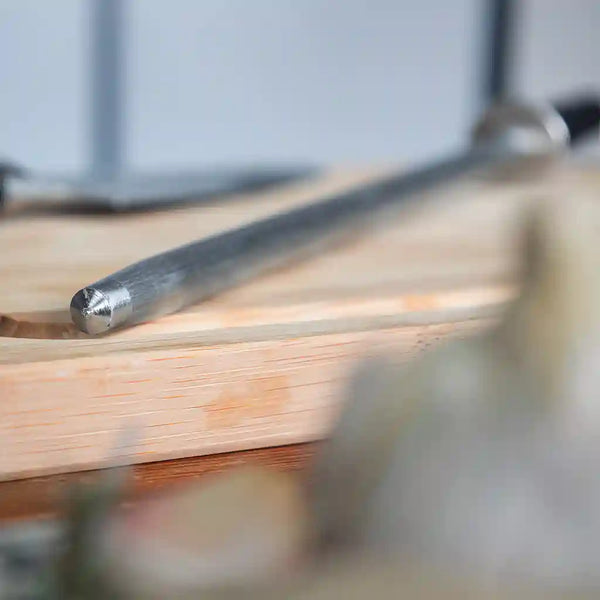
1. Choose the right honing steel.
You must first select a honing steel that is appropriate for your knife ; it should be slightly harder than your knife's blade.
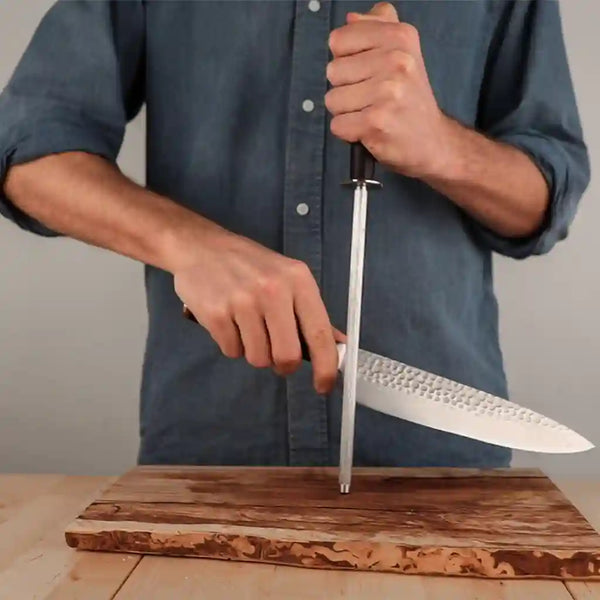
2. Hold the honing steel correctly.
Hold the honing steel vertically with one hand, and place the other hand on the handle of the knife. The blade should be at a 15-degree angle to the honing steel to get the best results.
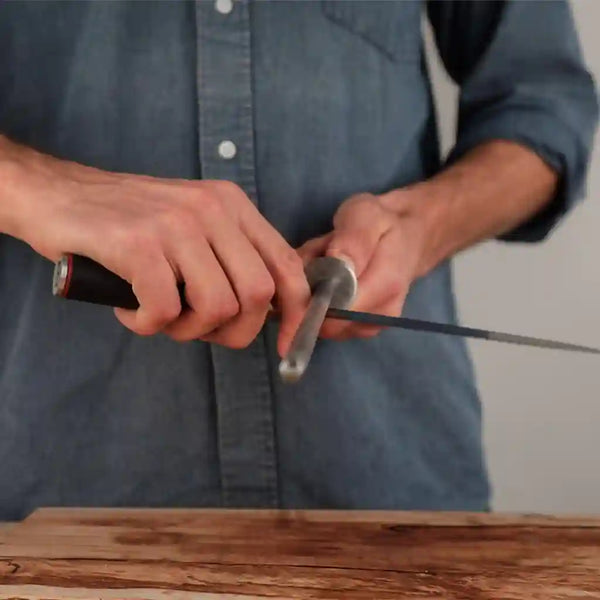
3. Let’s hone it!
Start at the base of the honing steel and stroke the knife towards the tip, maintaining the 15-degree angle. Repeat this action several times on each side of the blade.
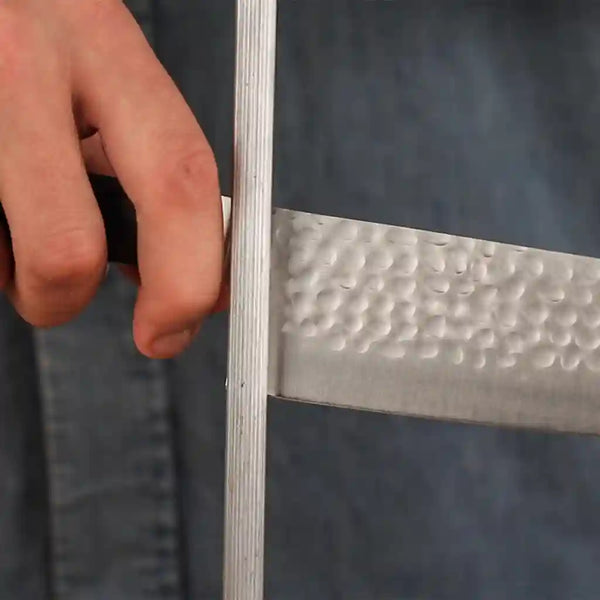
4. Check your progress…
After a few strokes on each side, take a look at your knife's edge to check if it has been straightened or not. If not, you should repeat the honing process until the edge is straight!
Check out our full honing tutorial…
No honing steel at home?
KOTAI introduces you to its 30 cm Honing Steel Knife Sharpener, a perfect ally in your kitchen:
- Thanks to its multi-function guard, your hand is protected, but it also allows you to find the perfect 15° honing angle!
- The end of the honing steel has a pointed tip to stabilize the honing rod vertically on your work surface.
- It will help you realign the edge of your knife, making cooking safer, faster and more enjoyable.
SHARPENING: How to sharpen your knife using a whetstone?
Even the best blades lose their initial sharpness over time, and that's natural! Whetstones - also known as water stones or sharpening stones - are used to sharpen the cutting edge of knives. Often used to sharpen Japanese knives, they can also be used for all types of knives!
KOTAI’s whetstones are made from corundum and are abrasive. However, in contact with water, they soften, which prevents abrasion of the blade. The two numbers in their description refer to the grain of the stone, the first being the coarsest grain and the second the finest.
Sharpening a knife with a whetstone can be a little delicate, but with practice and patience, it can be done easily. Once mastered, your knife will be as sharp as a razor blade! Discover three main simple steps to sharpening with a whetstone...
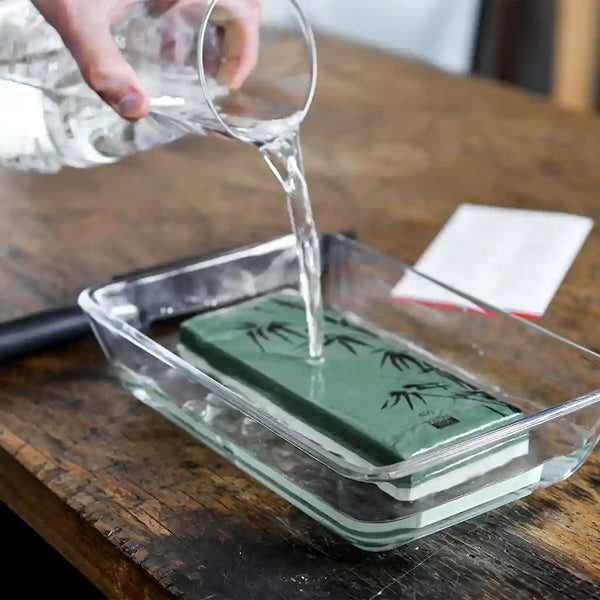
Step 1: Prepare the whetstone.
- Soak the whetstone in water for about 10-15 minutes before use.
- Place the stone on a non-slip surface such as a damp towel to prevent it from moving while sharpening.
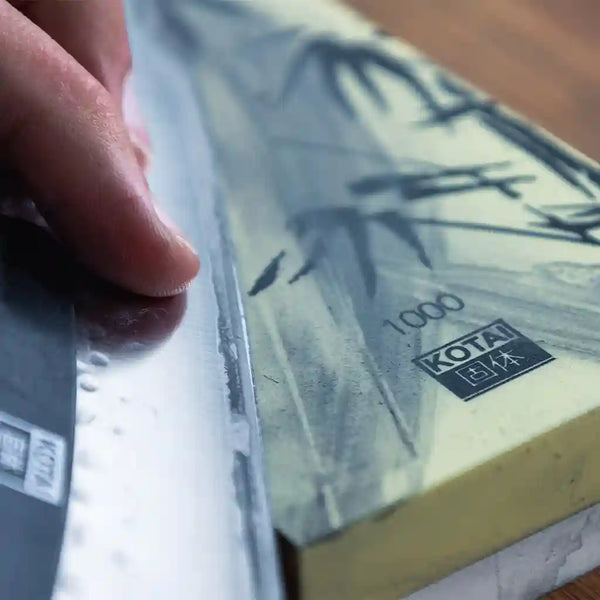
Step 2: Sharpen the knife.
- Hold the knife at a 15-degree angle to the whetstone.
- Begin with the coarsest side of the stone and run the blade along the stone in a sweeping motion, making sure to maintain the same angle throughout.
- Repeat this process on the finer side of the whetstone, running the blade along the stone in the opposite direction, still maintaining the same angle.
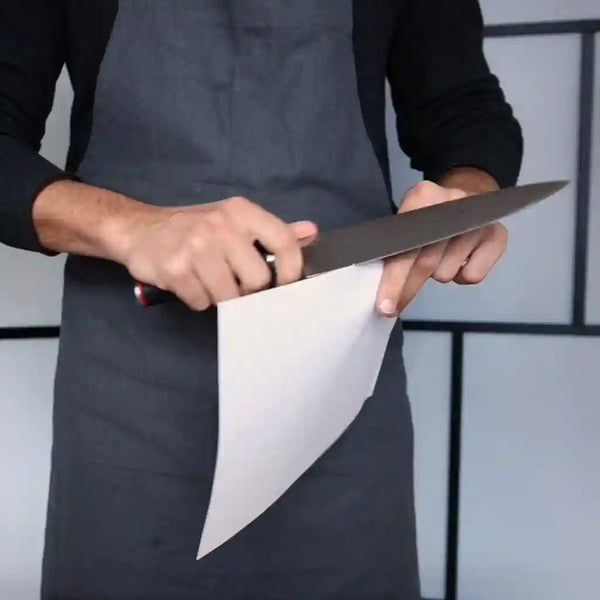
Step 3: Testing and finishing.
- After sharpening, test the blade's sharpness by slicing through a piece of paper or tomato. If it is still dull, repeat the sharpening process.
- Finally, rinse the knife underwater to remove any residue from the sharpening process and dry it thoroughly with a clean cloth.
Check out our full sharpening tutorial…
Which sharpening stone to choose?
The stone you should buy depends on the condition of your blade and the edge you want to obtain. Indeed, a large variety of sharpening stones exist, ranging from 180 to 6,000 grit, to satisfy different needs - note that the higher the number, the finer the grain is!
At KOTAI, we offer two types of whetstones:
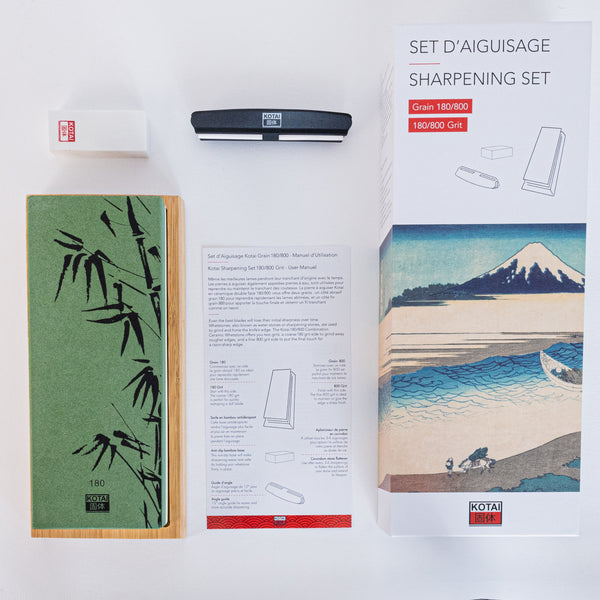
Sharpening Set - 180/800 Grit
KOTAI's Sharpening Set 180/800 Grit includes a 180/800 grit whetstone.
The coarse 180 grit side is perfect for quickly reshaping a rough, dull blade. While the fine 800 grit side is great for regularly maintaining the sharpness of your knife blade.
+ An anti-slip rubber natural bamboo base and a 15° angle guide are supplied with this set!
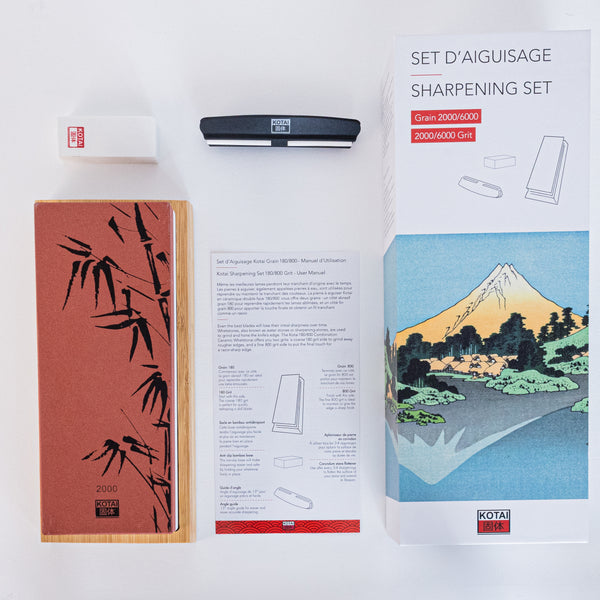
Sharpening Set - 2000/6000 Grit
KOTAI's Sharpening Set 2000/6000 includes a 2000/6000 grit whetstone.
The coarser 2000 grit is perfect for regular maintenance of your blade's edge. If your blade is dull, it will take longer to sharpen with a 2000 grit compared to a 180 grit. Finally, the finer 6000 grit side is ideal for adding the finishing touch while guaranteeing a razor-sharp edge.
+ An anti-slip rubber natural bamboo base and a 15° angle guide are supplied with this set!
To sum up…
Remember that sharpening and honing are two completely different processes, which are both necessary to maintain the edge of your knife and ensure its longevity!
- Honing should be carried out regularly after several uses with a honing steel, to maintain a straight edge.
- While sharpening should be carried out less frequently to restore a dull edge using a whetstone (180/800 or 2000/6000), which cannot be corrected by honing.


